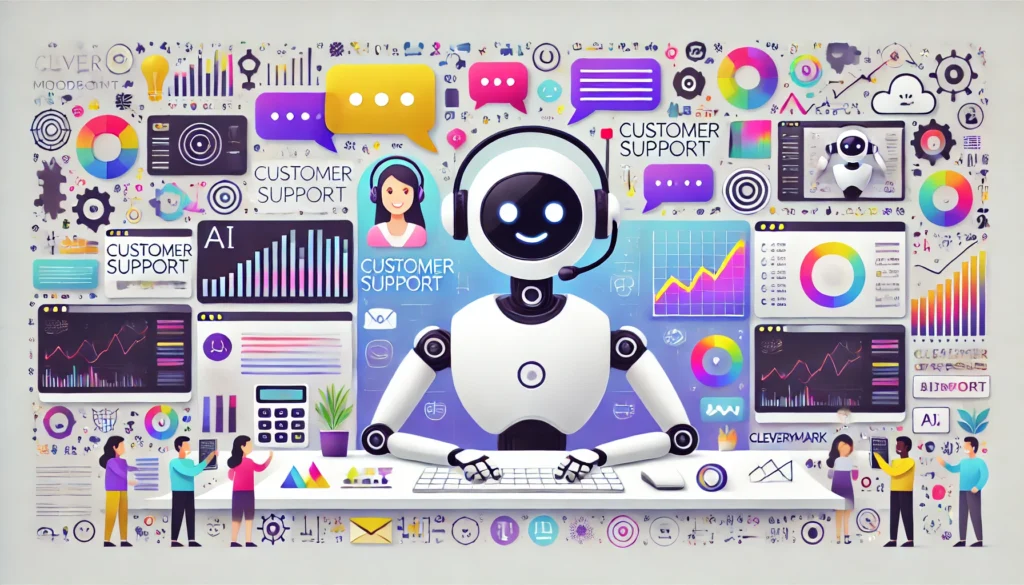
Let’s be honest—keeping up with today’s customers is like trying to text back 100 people at once and make dinner. In a world where people expect instant replies (and sometimes even emojis), offering stellar customer service isn’t a bonus anymore—it’s your ticket to staying in business. But how do you keep the quality high when your inbox is exploding and your phone lines are jammed? Simple. You let the robots help. No, not the world-dominating kind—the helpful, polite ones with 24/7 energy and zero coffee breaks.
Enter the magical realm of AI-powered customer service automation. It’s fast, scalable, and so efficient you’ll wonder why you ever did things manually. With a good AI setup, you can respond to customers in real-time, all day and all night, while your human team focuses on the bigger stuff (or gets a full night’s sleep—imagine that!).
So what exactly is this wizardry? Well, customer service automation with AI means using technologies like chatbots, natural language processing (a fancy term for “teaching computers to talk human”), and machine learning to handle common questions, routine tasks, and even predict what a customer might want next. It’s like hiring a tireless customer service rep who never gets tired or misplaces a ticket.
And yes, it’s packed with benefits. First off, it saves money. AI doesn’t need a salary, snacks, or sick days. It’s always on, always ready, and—brace yourself—always consistent. No “hangry Mondays” or misclicked replies. Just smooth, instant responses that keep your customers smiling. And while your human team handles the more nuanced, complex stuff, AI deals with the mountain of everyday requests—like checking order status, resetting passwords, or answering the same five questions that come in every single day. Sound familiar?
The coolest part? AI can scale like crazy. Whether you have ten customers or ten thousand shouting for help, AI can chat with all of them simultaneously without breaking a sweat. Now that’s some multitasking.
Behind the scenes, there’s a whole toolbox of clever tech doing the heavy lifting. You’ve got chatbots acting like your digital front desk, helping people find what they need and even recommending products—yes, they know your style. Then there’s natural language processing, which makes the bots sound less like robots and more like that helpful friend who always knows what you meant, even when you don’t. AI can also handle emails, sort them like Marie Kondo, and forward the tricky ones to humans. Oh, and let’s not forget voice assistants—your very own robot receptionist, ready to take voice commands like “Book me a haircut” or “Cancel that order!” while you sip your coffee.
Sentiment analysis is another secret weapon. AI can actually sense if a customer is getting annoyed (yes, even through text!) and gently alert a human to step in before things go nuclear. Think of it as emotional radar for your support team.
This all sounds like futuristic sci-fi, right? Well, spoiler: it’s already happening. Sephora’s chatbot helps you find the perfect lipstick and book an appointment, while KLM Airlines is busy automating flight updates and booking help through WhatsApp like it’s no big deal. Bank of America’s AI assistant “Erica” even helps customers track spending and pay bills, which—let’s be honest—some of us desperately need help with.
So how do you jump on this trend without accidentally building Skynet? First, start small. Automate the simple stuff—FAQs, order lookups, basic scheduling. Then teach your AI to recognize when it’s in over its head and pass things to a human. This hybrid approach keeps things smooth, personal, and drama-free.
And don’t forget the power of personalization. Your customers love to feel seen (don’t we all?). AI can greet them by name, remember what they bought last time, and suggest things they might actually want. It’s like a super-smart salesperson who’s also a great listener.
Of course, AI doesn’t magically stay smart. It needs regular training, fresh data, and a bit of human supervision to stay sharp and avoid saying something awkward. You’ll also want to roll it out across all the channels—website, app, email, social media—so wherever your customer shows up, AI is ready to help like a digital concierge.
And yes, measure everything! Look at how fast you’re responding, how many tickets you’ve handled, and whether your customers are actually happier (they probably will be). Use the data to improve and tweak—because good AI gets better with age. Like cheese. Or you, probably.
Looking ahead, AI in customer service is just getting started. We’re talking smarter bots, more emotional intelligence, and voice assistants that won’t just understand you—they’ll get you. The future is friendly, fast, and kind of fantastic.
TL;DR?
AI in customer service isn’t just cool—it’s a game-changer. It makes your business faster, leaner, and way more lovable. So why not let AI take the night shift, while you take the win?
